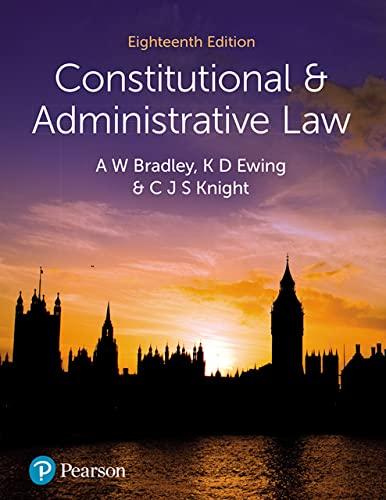Question
The need for reform: Connected Lender Liability and BNPLs Connected lender liability was introduced through the implementation of the Consumer Credit Act 1974 (CCA 1974)
The need for reform: Connected Lender Liability and BNPLs
Connected lender liability was introduced through the implementation of the Consumer Credit Act 1974 ("CCA 1974") which allowed the debtor to claim against the creditor and the supplier for misrepresentations in relation to the goods or services supplied and for any breach of the agreement.[1] This is found to be highly effective when the supplier proves to be recalcitrant, untraceable or insolvent.[2] This has caused credit card issuers to be resistant to expand their liability under s. 75,[3] as the CCA does not prevent the debtor from claiming first with the creditor when the liability is against the supplier.
With the increase in credit card use over the years card issuers opposed the burden of connected liability especially in cases where cards are used to make purchases from a supplier that has been affiliated to the credit card network through a merchant agreement or when the credit card is used abroad.[4] Office of the Fair Trading v Lloyds TSB Bank[5] on appeal brought significant resolution to the use of UK credit cards used for foreign transactions where the decision was held that the legislation[6] contained no imposition of territorial limitation and s. 75(2)[7] 'conferred on lenders the right to indemnify from suppliers where their relationship was subject to UK law' and from that perspective did not offer any protection to the consumer, it also did not limit the scope of s. 75(1)[8] and therefore there was no territorial limitation between UK card issuers and their customer.[9]
With the emergence of the Buy Now Pay Later ("BNPL") sector, focus should be paid to ensuring that the unsecured credit market is fit for purpose.[10] While BNPLs provided cheaper alternative to high cost and short term credit, customers currently have no recourse for complaint resolution where they took on debt that was unaffordable; regulating BNPL would require the company to undertake affordability checks; efficiencies in its processes and training of its employees.[11]
Do you think s 75 needs to explicitly address territorial limitation?
[1] Consumer Credit Act 1974 c. 39, s 75
[2] R Stokes: Commercial Law (10th edn, Sweet & Maxwell 2022) pg 442 para 22-004
[3] Consumer Credit Act 1974 c. 39, s 75
[4] i-law, 'Credit cards and connected liability' (2008) Lloyd's Maritime and Commercial Law Quarterly, <Credit cards and connected lender liability> accessed 24 April 2024
[5] [2008] 1 AC 316
[6] Consumer Credit Act 1974 c. 39, s 75(1)
[7] ibid s 75(2)
[8] ibid s 75(1)
[9] Office of the Fair Trading v Lloyds TSB Bank [2008] 1 AC 316
[10] R Stokes: Commercial Law (10th edn, Sweet & Maxwell 2022) pg 360 para 18-002
[11] Grant Thornton, 'The Woolard Review - what does regulation mean for BNPL?' (2021) < The Woolard Review - what does regulation mean for BNPL? | Grant Thornton> accessed 24 April 2024.
Respond to the above post using OSCOLA referencing. You may address aspects which include the following:
Consider the application of section 75. Consider the position prior to the establishment of the Act. Consider the reason for establishing the CCA and aspects relating to creditor's liability which have proved difficult to interpret. Assess the different cases on creditor's liability and how they have influenced the development of the statute. It should be based on UK law. Consider whether the law offers protection for debtors and how the law balances the interest of creditors.
Step by Step Solution
There are 3 Steps involved in it
Step: 1

Get Instant Access to Expert-Tailored Solutions
See step-by-step solutions with expert insights and AI powered tools for academic success
Step: 2

Step: 3

Ace Your Homework with AI
Get the answers you need in no time with our AI-driven, step-by-step assistance
Get Started


